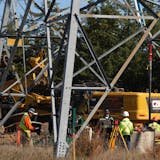Opinion editor’s note: Star Tribune Opinion publishes a mix of national and local commentaries online and in print each day. To contribute, click here.
•••
Minnesota should “adopt the Finnish education model,” Jon Olson wrote in his Feb. 13 commentary “10 bold initiatives for Minnesota.” Ted Kolderie quickly shot down the idea, calling it an “impossibility” (“Delving more deeply into ‘bold initiative’ No. 1,” counterpoint, Feb. 16). I heard an all-or-nothing approach in these two perspectives. However, I see a middle ground as a U.S. teacher and parent living in Finland.
The North Star State should neither import nor brush aside the high-performing Finnish model. Instead, Minnesota schools can draw inspiration from Finland while exercising caution.
In the early 2000s, the Finnish education system gained a reputation for high student achievement on a set of standardized tests called the Programme for International Student Assessment (PISA). However, Finland’s PISA scores have gradually declined. No one can definitively explain the country’s downward trend, but theories abound. In recent years, Finnish schools have struggled to address the low performance of immigrant students and a wide gender achievement gap.
Despite its blemishes, Finland’s efficient model still produces solid academic results. Finnish schools offer shorter school days, fewer standardized tests and less stress than I have found in U.S. districts. Elementary school students in Finland enjoy multiple recess periods per day, a balanced curriculum and very little homework. Finnish teachers, who typically hold a master’s degree in education, experience significant autonomy within a collaborative teaching environment.
Copper Island Academy, a Michigan charter school I work with, borrows best practices from Finnish education. For example, it implements hands-on programs (including studio and culinary arts), frequent outdoor breaks and teacher-powered leadership. Educators at this K-8 school also minimize homework and standardized test prep.
In 2023, Copper Island emerged as a top performer based on its high Michigan School Index score, placing it among the top 10% of the state’s public schools. Their Finnish-inspired model has quickly gained traction in their local community. The school expects enrollment to rise in the fall — from 340 to more than 400 students in just a year.


